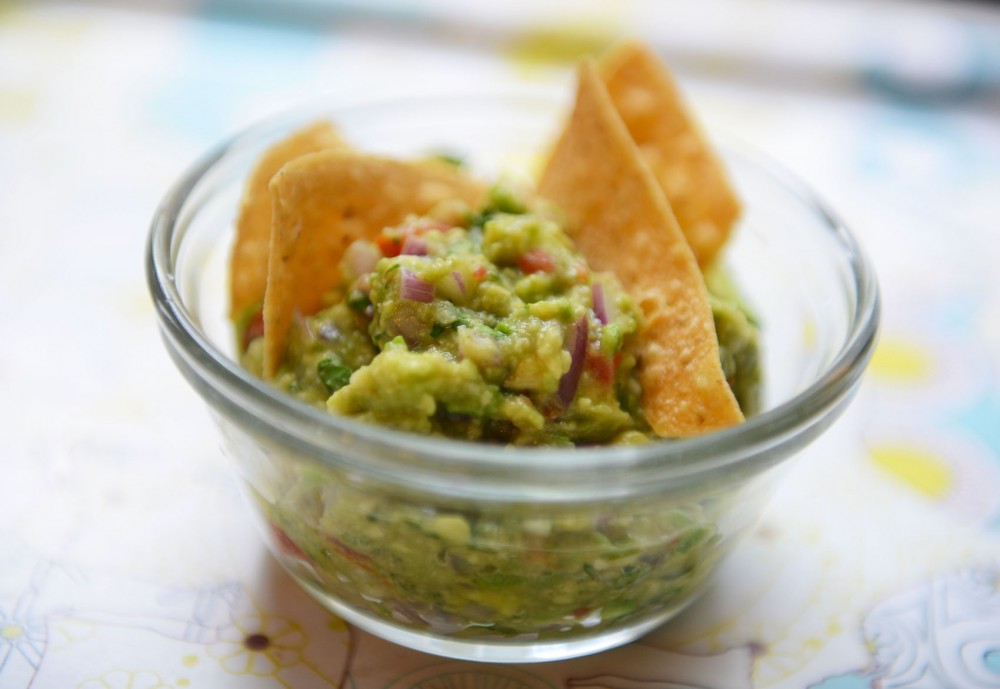Taco night is easy and accessible — it’s an all-around good time. Tortillas, pre-shredded cheese, pre-cut lettuce and meat, seasoned with a packet of tasty powder.
But what keeps the lettuce crisp? What is the mysterious coating on each individual cheese shred? And why is that tasty powder so darn tasty? Processed ingredients are the “Mean Girls” of the grocery store: Their perfection is misleading.
With a little extra time and effort, you can leave behind the popular kids and get to know some wholesome taco pals with these recipes.
Can-less black beans
Ounce-per-ounce, dried and canned beans cost about the same. But when you cook dried beans, they double in size. Dry beans have better value than canned, and by cooking them, you can control your sodium consumption. They do, however, take much more time and effort to prepare. But if you work with beans often and want to switch to dry, invest in a pressure cooker. That way, black beans usually take about 5 to 10 minutes to cook.
Dried black beans
1. Soak the dried beans for 6 to 12 hours. The best-textured beans are soaked for the longest amount of time. Cooks debate about the best time to salt beans. Salting the cooking water supposedly toughens the skins and slows the cooking time. However, beans cooked in salty water are more flavorful. One solution is to salt the soaking water to brine the beans and reduce the cooking time.
2. Drain the soaked beans and put them in a heavy-bottomed pot with enough water to reach about an inch above the beans. Heat until boiling.
3. Reduce the heat to a simmer and cook until the beans have reached the desired texture. This takes about 45 minutes.
4. Store your beans in the cooking liquid and use within three to four days. If you want to make a large quantity of beans to use later, store them in jars or plastic bags without the cooking liquid and freeze.
DIY Taco Seasoning
This seasoning gives your taco filling a spicy, satisfying flavor, whether you choose to fill your tortillas with meat, vegetables, tofu or beans. You can extend your taco meat by adding mushrooms, peppers and zucchini. This method attains the beefy taste associated with tacos while incorporating other flavors and textures. Buying whole spices and grinding them yourself is ideal, but pre-ground spices are also acceptable.
3 tablespoons ancho chile powder
2 teaspoons powdered oregano
1 teaspoon chipotle chile
1/2 teaspoon cumin
1/2 teaspoon corriander
1. Combine spices and seal in an airtight container to preserve freshness. The more vibrant the spice colors, the fresher they are.
2. To season meat, veggies, tofu, beans or a combination of ingredients, sauté an onion and a few cloves of crushed garlic in oil. Add a spoonful of the spice mix and salt (to your taste) and toast for a couple of seconds. Next, add your vegetables and proteins and cook as desired.
Guacamole
Guacamole should be the last dish you make on taco night, as avocados oxidize very quickly. To keep them green for a little longer, use plenty of citrus or seal them tightly with plastic wrap. Avocados, lime and salt are the only essential ingredients to good guac — keeping it smooth without other veggies is great for spreading on sandwiches. (I like to add onion, tomato, cilantro and garlic to my dip version of guacamole, but have fun with this. Heck, try it with bacon.)
1 lime
1/2 teaspoon salt
1 small onion, chopped
2 cloves garlic, crushed and minced
1 small tomato, diced
A small bunch of cilantro, chopped finely (about 10 stems)
2 avocados
1. Combine the ingredients in the order listed. (That way, the aromatics have a little extra time to marinate in the lime juice — it allows the oniony flavor to permeate the guacamole.)
2. Use a fork to mash the avocado into the rest of the ingredients. Make it smooth, chunky — however you like it.








